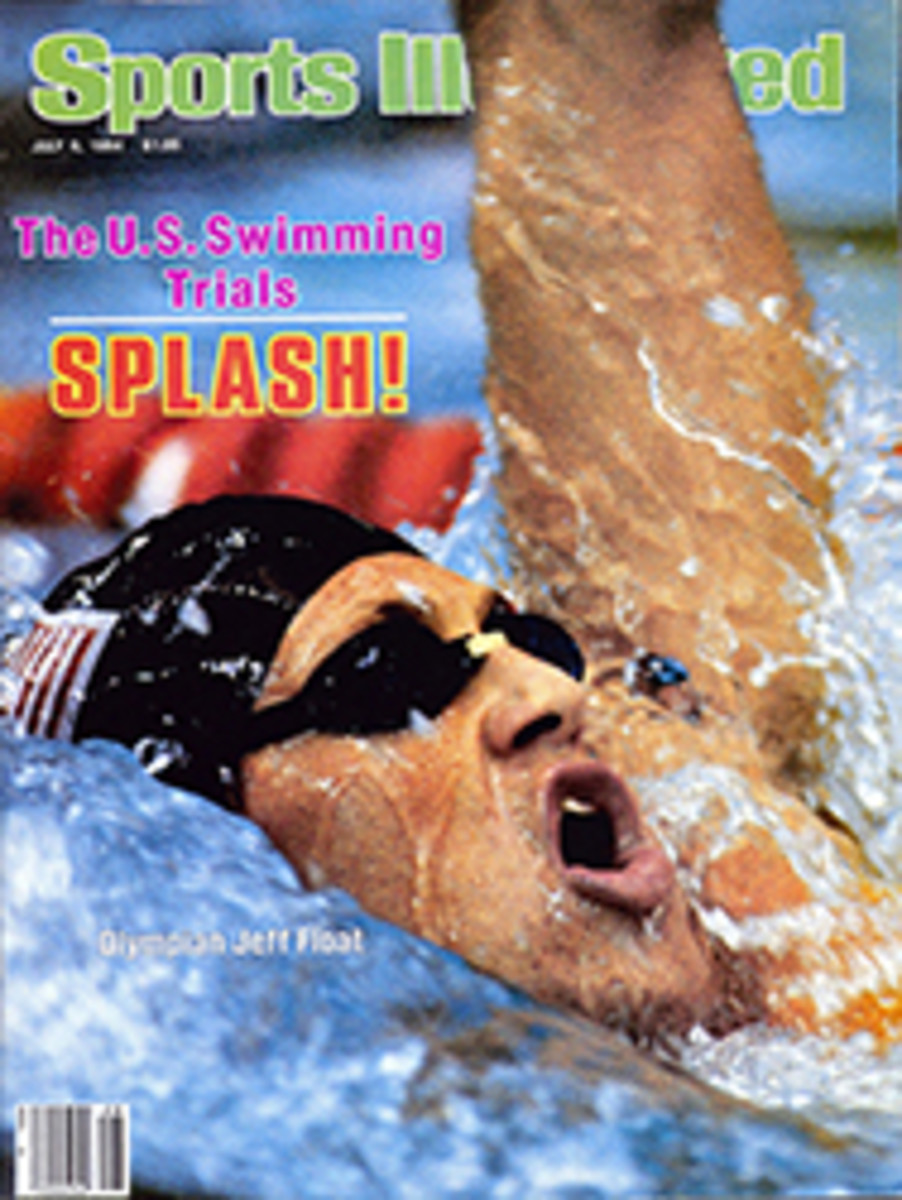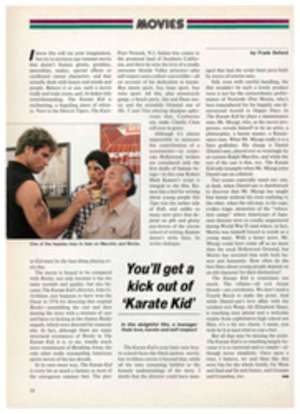
SCORECARD
THE SUPREME COURT'S TV RULING: WILL THE VIEWER BENEFIT MOST?
There may be some delicious irony in last week's Supreme Court decision on the televising of college football. The majority opinion, delivered by associate justice John Paul Stevens, may well prove to be an emancipation proclamation not for the nation's major colleges, many of which coveted the supposed freedom of an open market, but for the viewer at home. Some colleges that had been expecting to make a financial killing could wind up making less money, depending on how far the TV ratings slide in the coming football glut. The only truly free soul will be the armchair quarterback, who never asked the justices for more games in the first place. He now will be able to gorge himself on a smorgasbord of Saturday games that evidently will be shown by networks, cable programmers, pay-TV outlets, syndicators and independent stations from noon to midnight.
By ruling that the NCAA may no longer serve as the colleges' sole agent in the sale of TV rights, the Supreme Court killed a four-year $263.5 million deal the NCAA signed in 1982 with ABC and CBS, as well as a two-year $11.1 million arrangement signed last May with ESPN. Theoretically, the court established an open market in which the schools could peddle their games independently. In practice, it created such complete chaos that by week's end the 105 colleges in Division I-A were attempting to cede back some of their new freedom to an umbrella group that would serve as their bargaining agent: either the NCAA again, or the College Football Association, which represents 63 major powers and may work out a coalition agreement with the non-CFA Big Ten and Pac-10.
These groups now are rushing to come up with new "voluntary" plans to bring a semblance of order to the TV scene. Juan C. Burciaga, the district court judge whose decision the Supreme Court upheld, is expected to review the NCAA's proposal in the next few weeks. Each scenario calls for the continued involvement of ABC and CBS, which would air blue-chip games in their customary Saturday time slots of noon and 3:45 p.m. E.S.T., but there wouldn't necessarily be a restriction on the number of TV appearances a school could make. There would also be a third Saturday "window," usually in prime time, allowing the colleges or conferences to sell games to local stations, syndicators or cable carriers. Burciaga could junk the NCAA's proposal as yet another instance of restraint of trade or he could tailor a plan to his own liking. The only certainty is that college football is going the way of college basketball, with games proliferating all over the dial.
Wall-to-wall football should be a fearsome prospect indeed for the smaller colleges and for all but a handful of the most powerful schools. The fact is, the colleges need lots of network dollars to make their economy hum. But as CBS Sports president Neal Pilson told The Wall Street Journal, "When supply is up and demand is constant, price goes down." As the exclusive over-the-air carriers of college football, CBS and ABC had been prepared to pay each school this fall at least $600,000 for a national telecast, even though both networks were losing a total of about $7 million annually from their TV contracts with the NCAA. With their exclusivity diminished, they almost certainly will pay far less—perhaps $400,000 per team. The colleges will have to make up in local or regional TV income what they lose in network revenue. Top 20 schools—Notre Dame, say, or Georgia and Oklahoma, which were the schools that brought suit against the NCAA—probably will be better off. Even that's not certain, though; when the Sooners put out their games for TV bids twice this spring, they pulled them back both times because the offers were too low. Meanwhile, less prestigious I-A powers, such as Arkansas or North Carolina, easily could suffer. Last year college football ratings declined 10%, reflecting the general trend in TV sports. This year, thanks to the glut, they may drop to the level of test patterns. Will advertisers clamor for spots on regional conference packages, say, when the networks already have cherry-picked the best games for themselves?
One athletic director who isn't enamored of the future is Warner Afford of Mississippi. By sharing SEC network money, Ole Miss made $743,000 on TV football last year. Under the new math, Afford expects to make far less. "Don't forget what overexposure did to basketball last year," he says, noting that the SEC syndicators reduced their annual payment to each school from about $500,000 to $100,000 when the ratings plummeted. "I just don't believe that many schools are strong enough to go out there and demand the dollars they think they are going to get."
Stay tuned. This may become TV's newest survival competition, measured by how many games a fan can eyeball in one day.
—WILLIAM TAAFFE
MAD MONEY
Despite the Colts' switch to Indianapolis, NBC still plans to telecast the team's games into Baltimore on a regular basis next season. In fact, on a more than regular basis since Colt home games in Indianapolis don't have to be blacked out in Baltimore. That means that Baltimoreans could see all the Colt games on TV.
"We think there'll be terrific interest in the Colts in Baltimore," says NBC's Mike Weisman, "in this initial season, anyway. Some people still want to follow the team, and others are so ticked off they'll want to see them lose."
In other words, NBC is counting on that old love-hate relationship. Go, Colts! Boooo!
QUINN'S QUINTET
When the Celtics won the NBA title, guard Quinn Buckner became one of five basketball players who have achieved a rare triple: winning an NCAA championship, an Olympic gold medal and an NBA championship. Buckner led Indiana to the NCAA crown in 1976 and was on the victorious U.S. team at the Montreal Olympics before joining Boston in time to be with this year's winners. Celtics coach K.C. Jones and Bill Russell played together on San Francisco's NCAA champs in 1955 and 1956 and the U.S. Olympic team in Melbourne in '56 before becoming the backbone of Boston's NBA winners of the '50s and '60s.
A fourth triple champion is Jerry Lucas, who played for Ohio State when it took the NCAA title in 1960 and for the U.S. team that won in Rome. Lucas had to wait more than a dozen years, until he was with the New York Knicks in 1973, to gain the NBA part of the triple.
And the fifth? He was actually the first, and if you remember him you can dribble to the head of the class. In 1952 Clyde Lovellette played for Kansas' NCAA champions and the U.S. Olympic winners in Helsinki and later was on two NBA championship clubs, the 1954 Minneapolis Lakers and (with Jones and Russell) the 1963 Celtics.
Pretty impressive company, Quinn.
MAKING A BIG SPLASH
There's no place like home, and DePauw University has the record to prove it. The Tiger football, basketball and baseball teams all were undefeated at home during the past year. The football team was 5-0, running its home-game winning streak to 20 over four years; the basketball team (a powerhouse that finished third in the NCAA Division II tournament) was 15-0, running its home-court streak to 23; and the baseball team....
Well, the baseball team was undefeated at home, too. It had 24 games scheduled, won one (5-4 over the alumni) and had the other 23 rained out. "We had 37 rainouts in all this season," says baseball coach Ed Meyer, who has been coaching at DePauw for 21 seasons. "Some games were rained out, rescheduled and rained out again." A year ago the Tigers were rained out 14 times, home and away. Before that, Meyer says, "we hadn't been rained out two dozen times in 19 years."
Meyer has a tradition of giving a parting gift to his senior players. Some years it's a beer mug, some years a book—things like that. This time the coach came up with something different. He gave his departing seniors umbrellas.
AND NO DOUBLE COUPONS
ARA Services, a food-management company based in Philadelphia, has the responsibility of planning, preparing and serving the 900,000 or so meals that will be consumed between July 13 and August 13 by athletes and other members of the 142 Olympic teams expected at Los Angeles. It's a formidable task, and equally formidable is the job of supplying the food that ARA will cook and serve. To determine the types and amounts of meat, produce, deli and dairy products it would need, ARA consulted Olympic committees and food experts around the world. Then, in a sense, it traipsed over to the Vons Grocery Company of Los Angeles, the "official supermarket" of the 1984 Olympic Games, and began plucking things off shelves, although in amounts somewhat larger than those you'll find in the average supermarket cart. Among the items on the Olympic shopping list, according to Vons:
•22½ tons of T-bone steaks
•10 tons of sausage
•6 tons of lobster
•26½ tons of cherry tomatoes
•1,382 pounds of alfalfa sprouts
•10 tons of rice
•3 tons of noodles
•4½ tons of apples
•136 tons of bananas
•557 cases of blue-cheese dressing
•1,580 pounds of sunflower seeds.
The ascendancy of sausage over lobster probably derives from the numerical superiority of inland people over coastal residents, although price might be a factor, too, and the three-to-one edge rice has over noodles in the starch competition must also reflect national tastes. But how do you explain 136 tons of bananas?
PHOTO
Justice Stevens delivered the decision.
ILLUSTRATION
THEY SAID IT
•Rick Camp, Atlanta Braves pitcher, after teammate Claudell Washington and the Cincinnati Reds' Mario Soto got into a fight that led to a fine and suspension for both: "It's those rocks they took off the moon. They've got to put them back. Nothing, including the weather, has been the same since."
•Don Rose, San Francisco disc jockey, on the perennially disappointing Giants: "They've played on grass, and they've played on AstroTurf. What they should do is put down a layer of paper in Candlestick Park. After all, the Giants always look good on paper."
•Chris Lewis, surprise finalist at Wimbledon last year, loser in the second round this year, on what it meant to him to reach the 1983 finals: "When I got that far, I started believing I could beat anybody. It gave me a belief in myself that I certainly haven't lived up to since."
•Ken Landreaux, Los Angeles Dodger outfielder: "Winning isn't as important as doing well individually. You can't take teamwork up to the front office to negotiate."

